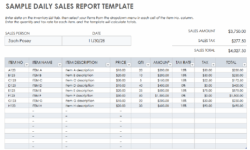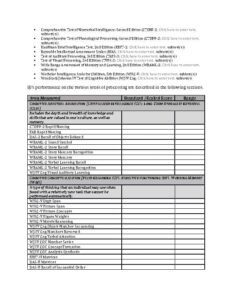In today’s competitive beauty industry, creating innovative and effective cosmetic products is only half the battle. The other, equally crucial half, involves ensuring those products are unequivocally safe for consumers. This isn’t just a moral imperative; it’s a stringent legal requirement that governs market entry and continued sales across the globe. Consumers are savvier than ever, demanding transparency and trustworthiness from the brands they choose to support, and regulatory bodies are constantly evolving their guidelines to protect public health.
Navigating the complex landscape of cosmetic product safety assessment can feel daunting. From understanding the toxicological profile of each ingredient to evaluating potential exposure routes and conducting stability tests, there’s a meticulous process involved. Every claim made about a product’s safety needs to be substantiated with robust scientific data and expert analysis, culminating in a comprehensive document that demonstrates due diligence. This report serves as your product’s passport to the market, proving it meets all necessary safety standards.

That’s where a well-structured cosmetic product safety report template becomes an invaluable asset for formulators, brand owners, and regulatory affairs professionals alike. It provides a clear, organized framework, ensuring that no critical piece of information is overlooked and that your assessment is thorough, consistent, and compliant with international standards. Utilizing such a template can significantly streamline your compliance journey, transforming a potentially overwhelming task into a manageable and systematic process.
Why a Robust Cosmetic Product Safety Report is Non-Negotiable
A thorough cosmetic product safety report isn’t merely a bureaucratic hoop to jump through; it’s the bedrock of consumer trust and a non-negotiable requirement for placing products on the market in many regions, especially within the European Union under the Cosmetic Products Regulation (CPR). These regulations demand that every cosmetic product undergo a detailed safety assessment by a qualified safety assessor before it can be made available to the public. Failing to provide this report, or providing an incomplete one, can lead to product recalls, hefty fines, and irreparable damage to your brand’s reputation.
The report meticulously details every aspect of a product’s safety profile, from the raw materials used to the final product’s stability and intended use. It scrutinizes the potential for adverse reactions, considering factors like ingredient concentrations, cumulative exposure from multiple products, and specific user groups, such as children or individuals with sensitive skin. This comprehensive approach ensures that all foreseeable risks are identified and mitigated, safeguarding consumer health and upholding the industry’s integrity.
Creating this report requires a deep understanding of toxicology, chemistry, microbiology, and regulatory affairs. It’s an expert task, often performed by specially trained safety assessors who can interpret complex scientific data and translate it into a clear, actionable safety statement. Their expertise is crucial in evaluating the vast amount of data gathered during product development and assessing its implications for human health.
Beyond regulatory compliance, a strong safety report bolsters your brand’s credibility. It demonstrates a genuine commitment to product quality and consumer well-being, fostering loyalty and confidence among your customer base. In an era where product transparency is increasingly valued, having a solid safety assessment readily available for scrutiny can be a significant competitive advantage.
Ultimately, investing the time and resources into a robust cosmetic product safety report is an investment in your brand’s future. It protects your consumers, ensures legal compliance, and builds a foundation of trust that is essential for long-term success in the dynamic cosmetic market.
Essential Components of Your Safety Assessment
A comprehensive safety report typically includes several key sections, each contributing to the overall safety evaluation. These components work together to provide a holistic view of the product’s risk profile.
- Product Description and Composition: Detailed information on the product’s identity, formulation, and manufacturing process.
- Toxicological Profile of Ingredients: Assessment of each raw material’s inherent hazard and its potential to cause adverse effects.
- Exposure Assessment: Evaluation of how consumers will be exposed to the product and its ingredients during normal and reasonably foreseeable use.
- Microbiological Purity: Data on the product’s preservation system and its ability to inhibit microbial growth, ensuring sterility.
- Stability Data: Information demonstrating the product maintains its physical, chemical, and microbiological quality over its shelf life.
- Risk Characterization: A comprehensive summary of the identified risks and a conclusion on the product’s safety.
- Safety Assessor’s Conclusion: The expert’s final determination regarding the product’s safety for its intended use.
Streamlining Your Compliance Journey with a Template
Navigating the intricacies of cosmetic regulations can be a formidable task, especially for smaller businesses or those new to the market. This is precisely where a standardized cosmetic product safety report template proves to be an indispensable tool. It takes the guesswork out of the process, offering a clear, step-by-step guide to compiling all the necessary information. Instead of starting from scratch and potentially overlooking crucial details, you can rely on a pre-structured document designed to meet regulatory expectations. This not only saves significant time and effort but also ensures a consistent and complete approach to safety assessment across your product portfolio.
A well-designed template acts as a checklist, prompting you for specific data points and sections that are mandatory for compliance. This reduces the risk of omissions that could lead to delays, requests for additional information from regulatory authorities, or even rejection of your product. By standardizing the format and content, it also makes the information easier for safety assessors to review and for regulatory bodies to audit, contributing to a smoother and more efficient journey to market. Think of it as a comprehensive roadmap, guiding you through every required stop on the path to product launch.
Furthermore, leveraging a template allows you to focus more on the scientific assessment itself rather than on organizing the documentation. It provides a professional and uniform appearance to your safety reports, reflecting the high standards of your brand. In a fast-paced industry, the ability to quickly and accurately generate compliant safety reports is a significant competitive advantage, enabling you to bring new, safe products to market more swiftly and confidently.
The journey to market for cosmetic products is paved with stringent safety requirements, but these are ultimately in place to protect consumers and uphold industry standards. By diligently preparing a comprehensive safety report, you’re not just meeting a legal obligation; you’re building a foundation of trust and quality for your brand. This meticulous attention to detail ensures that every product you offer is not only beautiful and effective but also unequivocally safe.
Embracing robust safety assessment practices means empowering your brand with integrity and credibility. It allows you to confidently introduce new innovations, secure in the knowledge that you have thoroughly vetted every aspect of your product’s safety profile. This commitment to excellence translates into long-term success and a loyal customer base, making the effort put into safety documentation a truly rewarding investment.



